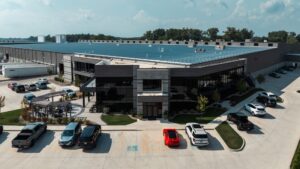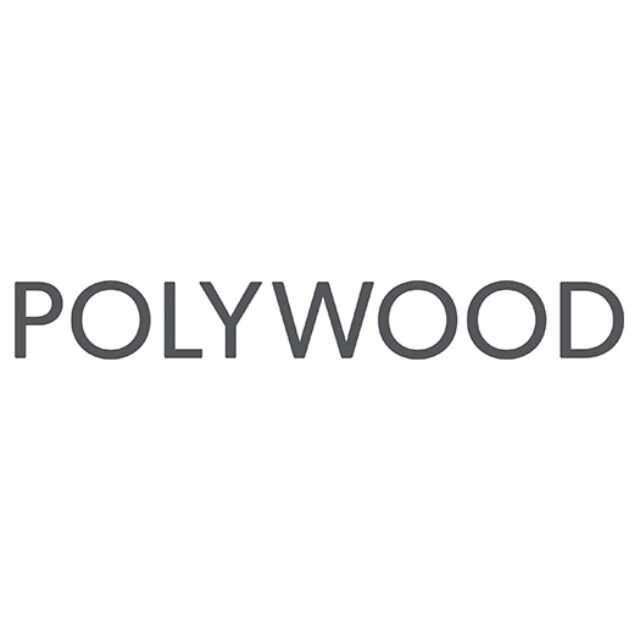Eastman Music Company, known worldwide for its high quality, handmade string, brass, woodwind, and percussion instruments, operated on Sage 100 for decades. But as it bought other instrument manufacturers, Eastman Music needed to scale more efficiently. Eastman Music deployed Acumatica Manufacturing, an easy-to-use, flexible Cloud ERP platform that streamlined manual processes and provided real-time data visibility into 14 companies in multiple countries.

Eastman Music Company
- Implemented a single, connected, modern ERP platform uniting 14 companies worldwide
- Gained intracompany transfer functionality and full transparency into all operations
- Improved on-time deliveries to largest customer and others
- Streamlined production processes, eliminating manual and retroactive data input
- Improved inventory management and warehouse workflows
- Connected third-party applications including Shopify
- Gained end-customer contact information to facilitate sales
- Automated manual processes, increasing employee productivity and customer satisfaction
- Acquired easy-to-use, intuitive system saving employees time when searching for data
- Improved customer service with access to real-time manufacturing and WIP data
- Gained scalable platform; added new acquisition to the platform in just a day
- Added 3-person operational support team that leverages data and manufacturing expertise globally
- Reduced intracompany transaction reports from one to two days to five seconds
- Cut shipping times from 10 days to same or next-day in many cases
- Streamlined container receiving, reducing processing from two weeks to two days

Challenges
Eastman Music Company began when Qian Ni, a professional flutist studying in Boston, MA, imported three violins from China and sold them from the trunk of his car.
Today, the Pomona, CA headquartered company has amassed a global empire offering high-end and affordable instruments that could equip most orchestras. It’s one of the largest instrument makers in the world.
Much of Eastman’s exponential growth has come during the past decade, as it grew from a flute and string instrument maker into a global manufacturer offering trumpets and trombones, saxophones, clarinets, guitars, and percussion instruments including marimbas and xylophones.
In the past two years alone, revenues grew 73 percent, says Ralph Torres, Vice President of Operations, who is based in the company’s Pomona, CA-based distribution center.
“We have had so much growth through increased sales and acquisitions that it has been hard to keep up,” he says. “We are now performing at levels that we were only dreaming of just a few years ago.”
Eastman’s brands now include well-known names Wm. S. Haynes, Backun Musical Services, S.E. Shires Co., Willson Band Instruments, Bourgeois Guitars, Malletech, Laskey, and UltraPure Oils. Eastman encompasses 14 production companies. Eastman Music sells instruments to professional musicians; consumers, and it reaches school districts and colleges through 400 instrument dealers. In addition to its manufacturing facilities throughout the U.S., Canada, Switzerland, and four locations in China, Eastman Music operates its own distribution network spanning the U.S., Europe, and Australia.
The distribution system is vast and complex: Eastman Music distributes some finished goods made overseas through its California distribution center, and some overseas parts are shipped directly to Eastman manufacturers. Its instrument makers also distribute their own products, and its Australian retailer sells online and through a brick-and-mortar store.
Eastman Music’s astronomical growth was engineered by Ni, who invested in Eastman’s future during the pandemic. He vastly improved the company’s technology infrastructure, which was anchored by Sage 100 and other systems it had cobbled together over the years. Employees struggled with Sage’s frequent crashes and corrupt data. Although Eastman attempted to move off-premises to the cloud, the strategy didn’t alleviate the company’s technology challenges.
“Even though Sage said it could work in the cloud, it definitely was not doing well there,” says Torres. “Every time Microsoft would do an update or a security update, all of a sudden, Sage was crashing. On top of that, we were limited on the production side. (Flute-maker) Haynes was trying its best to get the production module that we had added on in Sage to work, and it just was not happening.”
Torres was the lone IT support within the company and worked with an external resource, Modern IT, for support. “We really taxed them. And they were also the ones who said, ‘We’re losing our shirts here by supporting you guys with all these tickets with Sage connectivity,’” Torres says. “Our IT partner was just trying to Band-Aid this thing together every time it broke.”
As it got harder to make its systems work, Torres researched potential solutions.
ERP Solution
Acumatica Affordability, Ease-of-Use, and Open APIs
He first considered Sage X3 as a possible upgrade. “But there were some things with Sage specifically that left a bad taste in my mouth with the way they were handling some of the IT issues that we were having,” he says. He felt they had no intention of supporting the company.
Torres also reviewed Epicor, SAP, Microsoft Dynamics and Oracle NetSuite, narrowing his list to Acumatica and Microsoft Dynamics. They chose Acumatica because of its unique usage-based pricing model and tightly-integrated platform.
He also liked that Acumatica Manufacturing Edition easily connects to other applications, and that the company is focused on small and midsized companies that need an affordable ERP platform that can be easily configured. Having an open API structure, Torres knew, would allow BACKUN, its Canadian clarinet, woodwind and brasswind accessory company, to connect with Shopify. “The Shopify integration was a key concern from the only Eastman company that really uses Shopify, and they were the only company using Global Shop System as its ERP, and we knew we wanted long-term integration of all our companies,” Torres says.
Acumatica also allows customers to set up multiple tenants, and use multiple currencies and multiple languages. The software’s intercompany transfer functionality allows all of Eastman’s companies to conduct business seamlessly on a single platform. This is helpful because the company is managed by a central accounting team that handles finances for all 14 entities.
In Sage 100, all of the entities had separate databases, which made it difficult and time consuming to sign in and out of systems to perform intercompany transfers and corresponding financial transactions.
Implementation
Eastman Music Company first deployed Acumatica at its distribution headquarters, S.E. Shires & Co., and Haynes because of the shared-services structure of its sales and customer service departments, which work with a dealer network of retailers that do business with school districts and colleges.
Acumatica partner, Integrated System Solutions, based in Orange, California helped Eastman Music deploy Acumatica. As the first three sites were implemented, Eastman made an acquisition, and then it moved four additional companies to Acumatica. The remaining four locations were implemented and completed before the end of the year. Despite the complexity and global nature of the deployment, the implementation of 14 companies was completed in about two years.
Keep in mind, Torres says, “Eastman grew at ridiculous rates during the same time. I felt a little bit like Forrest Gump. We were just trying to get everything done, and then all of the sudden, the clouds parted, and everything came to together beautifully.”
Many companies in the music industry suffered through the pandemic and supply chain issues, but Eastman thrived. “A lot of the growth came from us gaining market share, but I’m sure we would never have been able to function and achieve those results with Sage,” Torres says.
“One of our employees described going from Sage to Acumatica like going from a commuter car to a Ferrari,” he adds. “All of the sudden it was like ‘Holy Cow, something as simple as allocating an order in Acumatica replaced so many manual workarounds in Sage.’”
Easy to Deploy
Acumatica’s intuitive and easy-to-use platform made it easy to deploy to other locations and spin-up new entities quickly, Torres says. In fact, he adds, he does it all himself.
“To underscore the seamlessness of adding another company, with the Malletech acquisition, it literally was the day that the public announcement went out, and that afternoon I saw the first Malletech invoice come through Acumatica and that it shipped,” says Torres. “It was amazing that there was literally no lag in business. It was seamless for us, but more importantly, it was seamless for and from our customers.”
He credits Acumatica’s import scenarios and previously created processes, both repeatable, in helping them add companies so quickly. All he needed to do was add vendors and customers that differed from the other companies. The accounting department added in AP and AR records and balanced them with the old systems. “It actually gets easier each time because we can tweak things and learn from the times before,” Torres says.
Outcome
Flexible, Personalized Platform
Eastman Music now has a flexible manufacturing ERP platform that executives can easily personalize to the way they do business without having to be software developers. Acumatica offers substantial ways to configure the platform with process automation, intuitive search capabilities, and non-technical personalization options.
Executives have streamlined and automated financial, sales, and manufacturing processes while eliminating many manual operations, saving employees countless hours with improved productivity. Employees tailor dashboards with KPIs that are vital to their roles, and can drill into data, such as purchase orders, invoices, or bills of material to gather the information they need.
With full visibility into its 14 global operations, Eastman Music executives have better data, which executives use to make strategic decisions and run the company more efficiently. Having the same manufacturing platform running at each site has made operations at each location more efficient, which has helped employees be more productive. With streamlined warehouse and shipping, orders are fulfilled faster, which increased customer satisfaction and loyalty.
“I can now manage our global operations 24 hours a day,” says Torres, adding he can access real-time information from anywhere in the world.
“The amount of data and the type of data we have now is so much more impactful and useful, and allows us to make better decisions,” says Jay Schreiber, Sales Manager. “We are much more efficient in tracking orders, quoting, and looking up inventory. Information is updated in real time, which allows us to convey that information to our customers in a much more efficient and timely manner.”
“We have heard from numerous customers that have said Eastman is their most reliable vendor, providing timely and accurate information for estimated time of delivery and inventory availability, among other things, which really mean a lot to our customers,” he adds.
Wm. S. Haynes’ Transformation
Flute maker Wm. S. Haynes Co, based in Boston, MA, was the first firm Ni purchased, and was among the first to deploy Acumatica. Its operational transformation serves as a shining example of the profound changes that happened throughout the global company when moving to Acumatica.
Acumatica Manufacturing provides details and data that Wm. S. Haynes Co didn’t have before, says Elizabeth Horowitz, operations assistant.
“The critical materials report allows me to see what is missing, and what we don’t have in the right warehouse,” she says. “MRP shows us what parts need to be ordered and what parts need to be made. Acumatica’s reorder points tell us exactly when we need to place an order for a particular item. Now I can see a forecast of when that’s going to happen and when expected inventory receipt dates may jeopardize production dates. It’s helped us catch a couple of things that before we would completely miss.”
She likes that she can view bill of materials (BOM) and real-time work-in-process throughout the production process. She simply selects BOM, creates a production order, and then releases it. Acumatica pulls the correct materials and quantities. “It’s just simple compared to what I was used to in Sage, which was cumbersome and very reactive,” she says. “You can make changes on the fly if needed. Now we can actually see what is in production.”
Rather than looking at a whiteboard or waiting for the production team to provide a status update, she simply looks in Acumatica and can see whether an order has been stuck in production or waiting for a shipment of one of the many special raw material metals they use.
“We didn’t have that visibility before,” Horowitz says.
Recouping Scrap Metal Costs
Horowitz has saved a lot of time using Acumatica’s automated processes. For example, she explains, their flutes are made of silver, gold, and sometimes platinum. Once an instrument is made, the manufacturing process generates scrap that they collect and sell to recoup some of their material investment.
”Previously, I would produce the items. Then I would take the weight of the parts, make the parts, and then I would take the weight of the scrap,” she says. “Finally, I would convert it into a scrap item code.”
Because the process was manual and took many steps, she sometimes forgot to do the scrap adjustment. Using the by-product process in Acumatica, she just adds it to the bill of materials as the last step and releases the materials. “I can adjust the quantity or the pricing, and I can have the production order create the scrap transaction for me as part of the production process,” she says. “Automating scrap adjustments is a game changer for me.”
Making Material Changes
Horowitz says Acumatica’s version functionality has eliminated the time she spent previously typing in changes and updating material lists. “Our flutes have different options, like variable thumb keys,” she says, offering an example. While the thumb keys cost the same, if they run out of one and need to substitute the other, she simply changes it on the existing bill of materials in a single step rather than retyping information.
Warehouse & Distribution Improvement
Eastman Music has a complex distribution model. In the U.S., many goods flow through the California distribution center. This location receives shipments from overseas and assembles orders for its dealers. It also receives goods from domestic manufacturing businesses, some of which make parts used by its other entities. Each manufacturer also receives overseas shipments, and handles its own distribution efforts such as drop-shipments to consumers.
Acumatica improved distribution, warehousing and shipping efficiency across the organization.
With Acumatica’s warehouse management functionality, Eastman Music’s distribution facilities refined its picking priorities, saving employees time while making the team more effective. “The system tells the warehouse people where to go based on the pick priority, rather than people choosing where to go,” says Torres.
The flexible system can lock shipments or items that need quality checks, which allows the company to manage its inventory better. “A lot of the functionality in the warehouse management system helps my customer service specifically know where a product is, and know what step of the allocation process they’re at with available stock.”
Items that are ready for fulfillment are shipped faster, says Schreiber. Previously, customer service would notify customers that orders would ship in 10 to 14 days because orders typically sat for 2 to 3 or more days before they actually shipped.” Now those types of products ship the same day or the next day at the latest,” he says.
“We still have some products that require additional quality control steps, but for products that are ready to ship, it’s really reduced the amount of time they sit idly in our warehouse. Now they can very clearly identify an item that is in stock, and it can ship this afternoon. They’re able to see everything in Acumatica without having to run out to the warehouse to figure things out.”
Streamlined Container Shipments
Acumatica streamlined the receipt of overseas containers, reducing turnaround times from two weeks to less than two days. “On student-level products we now have a 2-day turnaround on about 80 percent of a container because we were able to set up systems in Acumatica revealing what is on a PO receipt and who the orders are for,” says Schreiber.
Customer service allocates items quickly because Eastman streamlined the process in Acumatica and the warehouse can start packing items and shipping them.
Improved Sales Forecasting
Now that Schreiber has access to historical sales data, sales projections, and how the sales team is doing against its goals, he is able to update sales reports in less than two days rather than two weeks it took previously. “That’s a pretty dramatic change and it’s freed up a lot of time me to focus on other things that are contributing to the company other than just crunching numbers.”
For example, he says, rather than setting sales forecasts “on what we wish we could sell, we make forecasts on what we can actually make and sell.” Access to real-time production data has allowed him to better forecast the company’s SKUs that Eastman sells to its largest customer on a 12-month rolling basis. The task was previously manual and “second guessing from top to bottom through the whole supply chain and just didn’t work well,” he says.
“With Acumatica, the forecasting process really smoothed out and we’ve had dramatic improvement in on-time delivery with our major customer, which obviously trickles down to also being better at supplying all of our customers on a timely basis.”
DYI Reporting
With Acumatica’s easy-to-use and intuitive tools, Schreiber and others create any number of reports and personalized dashboards themselves. “If I wanted to update the reporting previously, I had to pay for someone to do the work,” Schreiber says, adding he often opted to live with what he had and do without.
“Being able to create the generic inquiries and control the data on our own was huge,” adds Torres. “Once we felt comfortable making our own reports, that was a huge turning point for us.”
“Now, without having to learn coding to use Power BI, we’re able to just pull so much of the data out of Acumatica ourselves that we were never able to before because we had to pay a consultant else to do it,” he says. To add a field to a report, he simply does that himself in a few minutes.
Continued Growth
There’s no doubt that Eastman Music Company will continue to grow through acquisitions, and adding additional companies, no matter where they are in the world, will be much easier with Acumatica’s platform.
With Acumatica deployed throughout the global company, Torres and others are learning what other efficiencies the platform can help them achieve.
“We are just scratching the surface with how we can use Acumatica to continue to improve and reengineer our business processes,” he says. “We’ve done some pretty cool things with Acumatica already considering the resources we have and the complexity of our companies.”
 Canada (English)
Canada (English)
 Colombia
Colombia
 Caribbean and Puerto Rico
Caribbean and Puerto Rico
 Ecuador
Ecuador
 India
India
 Indonesia
Indonesia
 Ireland
Ireland
 Malaysia
Malaysia
 Mexico
Mexico
 Panama
Panama
 Peru
Peru
 Philippines
Philippines
 Singapore
Singapore
 South Africa
South Africa
 Sri Lanka
Sri Lanka
 Thailand
Thailand
 United Kingdom
United Kingdom
 United States
United States






